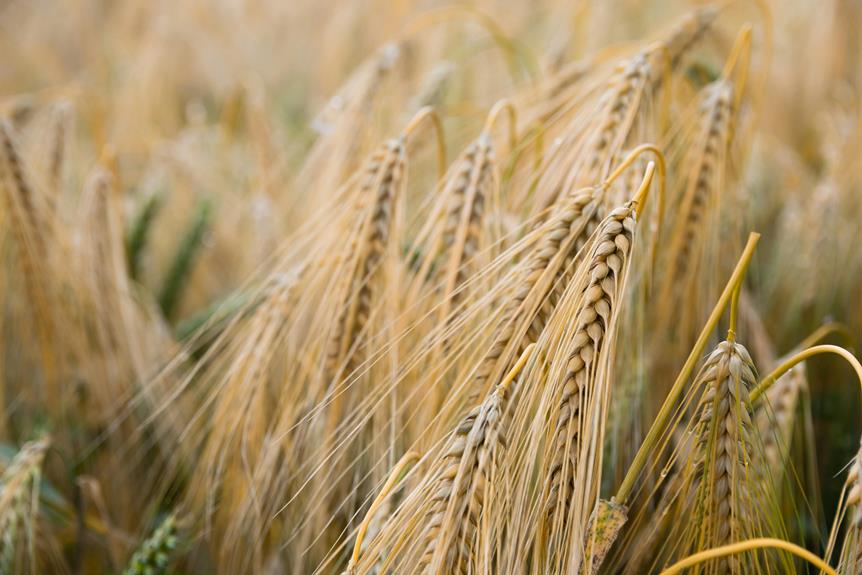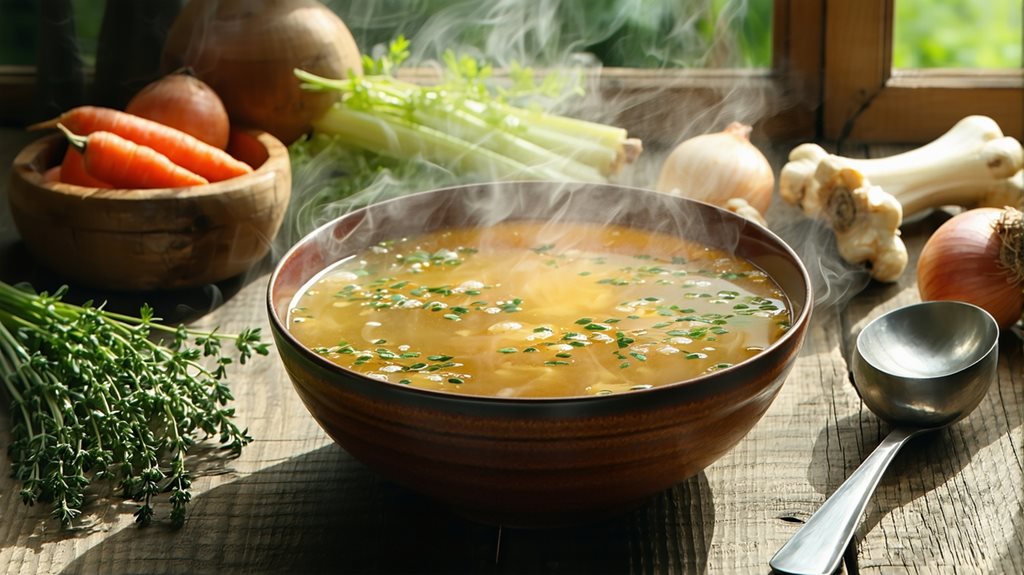While you might think that your AeroGarden is limited to the seed pods you buy, you'll be pleased to know that you can indeed use your own seeds. This flexibility allows you to explore a wider variety of plants than what's available in pre-packaged options. You'll need to confirm that your chosen seeds are suitable for the indoor environment that AeroGardens provide. Selecting the right seeds is just the beginning. How do you prepare and successfully grow these seeds in a system designed for pre-packaged pods? The key lies in understanding the specifics of the AeroGarden's growing environment.
Key Takeaways
- Yes, you can plant your own seeds in an AeroGarden using either homemade or purchased seed pod kits.
- Choose seeds that are suitable for hydroponic growth, such as herbs, lettuce, and small vegetables.
- Ensure seeds are pre-soaked and viable for better germination and growth in the AeroGarden system.
- Customize your gardening by using seeds from preferred plants for a more personalized and diverse garden.
- Maintain optimal growth by monitoring light, water, and nutrient levels specific to the needs of your chosen seeds.
Understanding AeroGarden Basics
Before delving into planting, it's important to understand how an AeroGarden functions and what sets it apart. You'll find that this indoor gardening system offers a soil-free approach, relying on a hydroponic setup. This means your plants grow in water, not soil, which greatly reduces mess and maintenance. The AeroGarden's built-in grow lights mimic natural sunlight, providing your plants with the ideal spectrum of light needed to thrive.
You have complete control over the environment. With adjustable light settings and a water pumping system, it's in your hands to make sure your plants receive the right amount of light and nutrients. The system's control panel acts as your command center. Here, you can set the light timers and receive reminders when it's time to add water and nutrients. This level of control is important for those who seek efficiency and precision in their gardening efforts.
Moreover, the AeroGarden is designed to be user-friendly. It alerts you when action is needed, and the setup process is straightforward. This allows you to focus on the finer details of plant care without worrying about the basics. You're in charge from seed to harvest, tailoring each step to your plant's needs.
Benefits of Using Your Own Seeds
Using your own seeds in an AeroGarden not only cuts costs but also broadens your plant variety options. You're no longer tied to the pre-packaged seed kits and their limited selections. With your own seeds, you can tailor your indoor garden to include unique herbs, vibrant flowers, or exotic vegetables that aren't typically found in standard kits. It's all about personalizing your gardening experience to fit your specific tastes and dietary preferences.
Moreover, using your own seeds gives you complete control over the sourcing of your plants. You can opt for organic seeds, heirloom varieties, or seeds that support sustainable farming practices. This level of control guarantees that you know exactly what you're growing and consuming. You're not just harvesting plants; you're cultivating a garden that aligns with your ethical and health standards.
Additionally, starting from scratch with your own seeds can be incredibly rewarding. Watching your plants grow from a mere seed to a flourishing bloom or a bountiful vegetable is a gratifying process. It connects you more intimately with the cycle of life and growth, enhancing your appreciation for the wonders of nature right in your own home.
Choosing Compatible Seeds
When selecting seeds for your AeroGarden, it's important to choose varieties that thrive in hydroponic environments. This guarantees that you maximize your control over the growth and health of your plants. Let's streamline the decision-making process with a focus on achieving best results.
Here are three critical factors to ponder:
- Growth Habit: Choose plants that remain compact and bushy. Large, sprawling varieties, like some types of tomatoes or cucumbers, can quickly outgrow the confined space of an AeroGarden. Opt for dwarf or miniature versions that are bred to perform well in smaller spaces.
- Root System: Look for plants with moderate root systems. Some plants, particularly large root vegetables like carrots or beets, might struggle in the shallow growing media of an AeroGarden. Instead, focus on herbs, lettuces, and greens, which have less extensive root systems and adapt well to hydroponic growing conditions.
- Maturation Time: Select seeds that have a quicker maturation time. Fast-growing plants like basil, cilantro, or baby greens allow you to see results quickly and make adjustments as needed, giving you more control over the growing process.
Preparing Seeds for Planting
To prepare your seeds for planting in an AeroGarden, start by soaking them overnight to enhance germination. This initial step is essential as it softens the seed coat, speeding up the sprouting process. Make sure you use room temperature water and a small bowl for this task. Place your seeds in the bowl, cover them with water, and let them sit overnight.
After soaking, it's time to inspect your seeds. Discard any seeds that haven't swelled or softened, as they're less likely to germinate. You're aiming for the best, and this selection process ensures you're only moving forward with the most viable seeds.
Next, pat the seeds dry with a clean towel. Moisture is necessary, but too much water can lead to fungal issues.
Now, prepare a clean surface to handle your seeds. Hygiene here is crucial to preventing the spread of any diseases. Arrange your seeds and inspect each one again. You're in control of selecting the strongest candidates for your AeroGarden.
Custom Seed Pod Alternatives
Although AeroGarden provides its own seed pods, you can also create your own to save money and expand your plant options. This flexibility lets you tailor your gardening to your specific preferences and needs, giving you complete control over what you grow.
Here's why opting for custom seed pod alternatives can be a game-changer:
- Variety Expansion: You're not limited to the seed selections AeroGarden offers. Want to try exotic herbs or rare vegetables? Go for it! You pick the seeds, expanding your garden's diversity.
- Cost Efficiency: Buying bulk seeds or using leftovers from your outdoor garden cuts costs significantly compared to pre-packaged pods. It's economical and reduces waste.
- Learning Experience: Crafting your own pods can deepen your understanding of plant life cycles and gardening techniques. It's a hands-on approach that enhances your gardening skills.
Creating your own seed pods means you're not just following instructions; you're making decisions. You choose the seeds, the timing, and the care regimen. This autonomy transforms your AeroGarden from a simple kitchen gadget into a powerful tool for personal agriculture.
Embrace the freedom to experiment, learn, and ultimately, cultivate a garden that's uniquely yours.
Steps to Plant Your Seeds
Let's explore the steps you'll need to plant your seeds in an AeroGarden.
First off, you'll want to select the right seeds. Opt for varieties that are known for their compatibility with hydroponic systems; herbs, lettuce, and cherry tomatoes are excellent starters. Remember, you're in charge of what grows in your garden, so choose seeds that cater to your culinary preferences or aesthetic desires.
Next, prepare your seed pods. If you're not using pre-packaged pods, you'll need lightweight grow media like peat moss or coconut coir. Fill the plastic pod up to about three-quarters, then gently press one or two seeds into each pod. Don't bury them too deep; a light cover is all they need. This ensures they've ample room to sprout effectively.
Once your seeds are nestled in, label each pod. This isn't just about organization—it's about strategizing your garden layout. Place taller plants towards the back and shorter ones in front. This way, you'll maximize each plant's exposure to light and space, optimizing your garden's productivity.
Managing Light and Water
Now that your seeds are planted, managing light and water becomes your next focus to guarantee healthy growth. You've got the power to optimize these elements, ensuring your plants thrive in their controlled environment.
Here are some key strategies to effectively manage light and water in your Aerogarden:
- Adjust Light Intensity and Duration: Plants have different light needs depending on their type and growth stage. Most herbs and greens require about 14-16 hours of light per day, while flowering plants might need up to 18 hours. Use your Aerogarden's control panel to set the light duration, ensuring it mimics natural sunlight patterns. This manipulation not only maximizes photosynthesis but also influences plant behavior, promoting faster growth and greater yields.
- Monitor Water Levels Regularly: Your Aerogarden will alert you when it's time to add water, but it's wise to check the water level manually every few days. Roots shouldn't be submerged completely; just enough water to moisten them is ideal. Over-watering can lead to root rot and under-watering can stress plants.
- Maintain Nutrient Balance: Every two weeks, refill the water reservoir and add nutrients. The right balance of nutrients and water ensures your plants absorb the most nourishment without getting overwhelmed. Adjust the nutrient concentration based on plant size and health.
Troubleshooting Common Issues
Despite your best efforts, you might encounter some common issues with your Aerogarden; let's explore how to address them effectively. To start with, if you notice your plants aren't growing as expected, it's important to verify the basics: Are the lights functioning correctly, and are you managing the water and nutrients as recommended? Sometimes, the simplest checks can provide the most immediate solutions.
Here's a quick reference table to help you pinpoint and resolve some frequent problems:
| Problem | Solution |
|---|---|
| Slow Growth | Verify ideal light settings and check nutrient levels. |
| Algae Growth | Reduce light exposure to water and clean the system regularly. |
| Weak Plants | Adjust the pump settings for better water circulation. |
| Yellowing Leaves | Confirm proper pH balance and nutrient mix. |
Enjoying Your Harvest
Once your Aerogarden yields its first harvest, you'll discover the joy and satisfaction of tasting the fruits of your labor. The vibrant, fresh produce right at your fingertips not only adds zest to your meals but also empowers you to control what goes on your plate.
Here's how you can make the most out of your harvest:
- Experiment with Recipes: Use your fresh herbs and veggies to try new recipes or enhance old favorites. Whether it's adding fresh basil to your pizza or crafting your own herbal
tea blends, the options are limitless. - Preserve the Surplus: If you've got more than you can use immediately, consider preserving your produce. Freeze, dry, or can your harvest to extend its shelf life. This way, you're maximizing your yield and ensuring nothing goes to waste.
- Share the Wealth: Sharing your harvest with friends and family not only spreads joy but can also inspire others to start their own Aerogarden. It's a rewarding way to showcase the fruits of your dedication and maybe even exchange tips and seeds.
Enjoying your harvest is as much about relishing the fresh flavors as it's about taking pride in your self-sufficiency. Savor every bite knowing you're in complete control from seed to plate.





Konnichiwa! (Hello!) I'm Pat Tokuyama, a Japanese tofu cookbook author, who travels for music, food, and adventure. If you like Japanese tea, checkout some of the newestorganic japanese tea, matcha bowls and noren and more!
** Curious about the Plant Based Japanese Cooking Club? ** Learn more here!